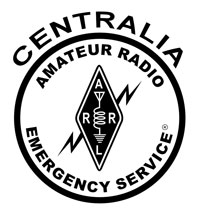Training:
- Possess at least a Technician Class Amateur Radio License. General or Extra is better.
- Know and understand the Centralia ARES activation plan and know what to do.
- Participate each training day in our directed net and try other nets for additional experience and training.
- Know and understand how to originate & send messages in ARRL format.
- Know how to conduct a proper windshield survey.
- Know both the ITU (ham) and Law Enforcement phonetic alphabets well.
- Take and maintain basic first aid / CPR or CERT rescue first aid
- Take the FEMA IS-100 on line course (about 30-60 minutes long)
- Take the ARECC ARRL Level 1 course (costs involved)
Equipment:
- Own at least a 2 meter handheld or mobile radio capable of ARES use (two band handheld is better and two band handheld with a mobile is better yet)
- Have a spare battery pack(s) for your handheld radio.
- Keep your equipment manuals handy or make copies for your radio equipment bag and go bag.
- Own a ham radio vest or other type of identifying clothing for all weather conditions.
- Own magnetic “Emergency Radio Communications” signs for your vehicle.
- Have a well-equipped radio equipment bag.
- Have a well-stocked go-bag capable of sustaining you for 36-72 hours.
- Have an emergency backup power source for your home (generator or battery).
- Keep your identification cards and FCC amateur radio license handy.
Ability:
- Know how to use your radios, program them on the fly and know their features.
- Don’t stop at a technician class license or a 2 meter radio. HF privileges support emergency communications around the world.
- Act as a net control for a Centralia ARES directed net as often as possible.
- Participate in as many ARES drills as possible.
- Know how to make and use emergency antennas for your equipment and our EOC equipment.
- Make sure the EC has up to date information on your phone number, address and equipment capabilities plus training certificates.
- Know how to:
- activate all radios in the EOC
- be able to change from one programmed frequency to another
- be able to program a new frequency into the 2 meter radio’s memory
Have the equipment and the knowledge necessary for deployment to any location at a moments notice; be able to set up a radio and antenna system (plus power) and send or receive emergency messages in support of Emergency Services.
4/1/2014

